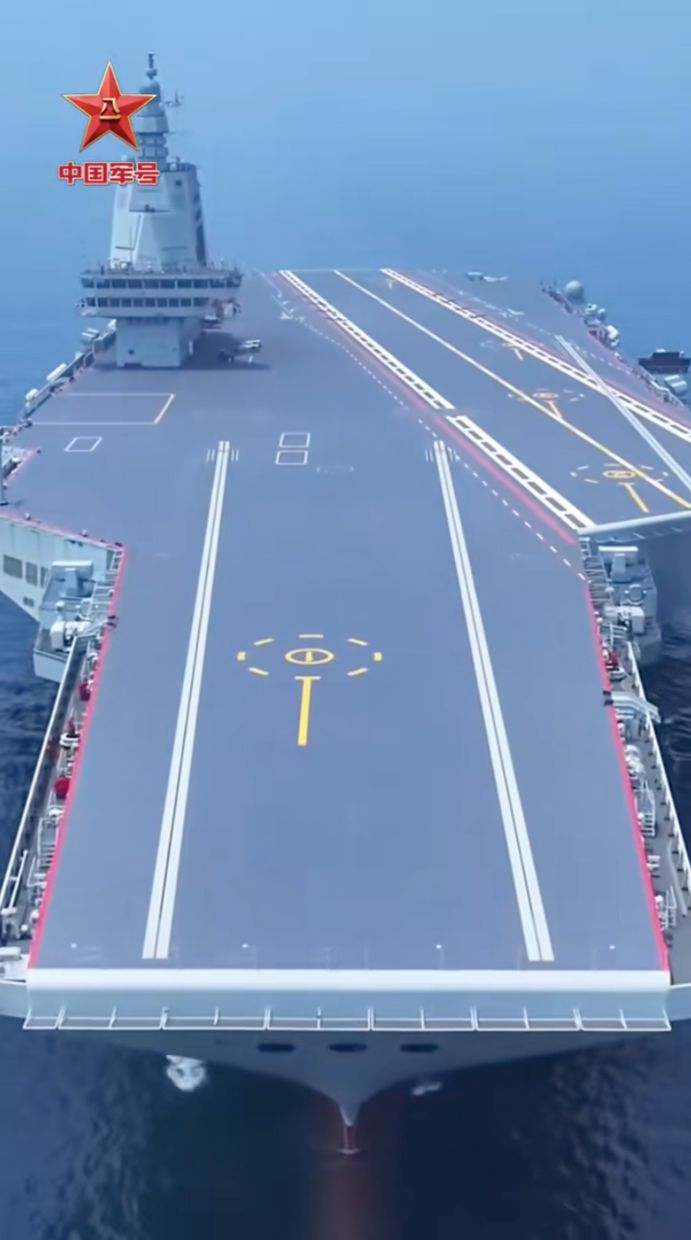China‘s third and most advanced aircraft carrier, the Fujian, has passed through the Taiwan Strait to conduct scientific research tests and training exercises in the South China Sea, the PLA Navy said on Friday.
“The cross-regional tests and training are a routine mission of the carrier’s construction process and do not target any specific objects,” said navy spokesman Senior Colonel Leng Guowei, according to state news agency Xinhua.
Photos and videos posted on social media showed the Fujian headed south after leaving its shipyard in Shanghai on Wednesday, triggering speculation that it would soon enter service.

It was spotted by Japan’s Maritime Self-Defence Force on Thursday afternoon sailing in the East China Sea about 200km (125 miles) northwest of the disputed Diaoyu Islands, known as the Senkakus in Japan.
It was the first time the aircraft carrier had been seen by Japan’s defence force, which said the Fujian was accompanied by two destroyers. Their hull numbers indicated they were part of the People’s Liberation Army Eastern Theatre Command.
The Fujian will be China‘s first – but the world’s second after America’s USS Gerald R. Ford – aircraft carrier equipped with electromagnetic catapults.
The Chinese warship has conducted eight sea trials since May 2024, testing its propulsion, electronic systems, deck operations and carrier-based aircraft take-offs and landings.
The Fujian is expected to carry J-35A stealth fighter jets, J-15T heavy carrier fighters, J-15DT electronic warfare aircraft and KJ-600 early warning aircraft.
China’s second carrier, the Shandong, followed a similar schedule before it entered service in 2019. It set sail on November 14, transiting the Taiwan Strait by November 16, reaching Sanya on the island of Hainan – which later became its home port – and officially entering service one month later after a final sea trial in the South China Sea.
Taiwan‘s defence ministry said on Friday morning that 10 PLA Navy vessels were detected operating around Taiwan as of 6am. It did not say whether the Fujian was among them.
It said People’s Liberation Army aircraft were seen at the same time, 15 of which crossed the median line – the unofficial boundary that splits the Taiwan Strait – and entered the island’s northern and southwestern air defence identification zone. The ministry said it was monitoring the situation and responding accordingly.
PLA aircraft carriers the Shandong and Liaoning have previously been seen transiting the Taiwan Strait, including last October when Taiwan’s defence ministry reported that the Liaoning sailed through the waterway after it took part in a PLA exercise near the self-ruled island earlier that month.
Mainland military analyst Song Zhongping said the Fujian’s sea trials in the contested South China Sea were a crucial step before its formal commissioning.
“The concept of sea trials is to conduct tests in different maritime areas. Compared with the East China Sea, the South China Sea has harsher conditions, so it is very important for an aircraft carrier to undergo testing in such an environment. Conducting trials in unfamiliar waters is also a key part of the overall process,” he said.
Song said it was unclear whether the Fujian would be commissioned in Sanya soon after the sea trial, as the Shandong was. “But once sea trials are completed, it could be handed over to the navy at any time,” he added.
Li Jian, an expert from the PLA’s Naval Research Academy, said the South China Sea’s depth and complex maritime conditions made it more suitable for systematic aircraft carrier tests and training.
According to a report by Yuyuan Tantian, a social media account affiliated with mainland state broadcaster CCTV, Li said that passing through the Taiwan Strait to reach the South China Sea was the “most efficient and reasonable” route choice.
The combined testing and training tasks were designed to ensure rapid combat readiness, and the operation might represent “the final phase” of testing before the Fujian was officially commissioned, he was quoted as saying. – SOUTH CHINA MORNING POST




